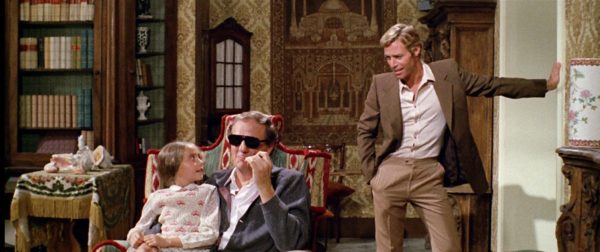
In Horror Bucket List, I fill in gaps in my horror film knowledge based on recommendations from friends on Twitter. We then have a back and forth discussion about their history with the film.
Next up: I’m headed to Italy for an investigation into a slate of murders with Dead For Filth podcast host and screenwriter Michael Varrati.
Spoilers follow…
https://www.youtube.com/watch?v=q3akNsFSvz0
Plot: A newspaper reporter (James Franciscus) and a retired, blind journalist (Karl Malden) try to solve a series of killings connected to a pharmaceutical company’s experimental, top-secret research projects and, in so doing, both become targets of the killer.
Full confession, this was a recent first time watch for both of us. What attracted you to The Cat o’ Nine Tails and, more broadly, Argento’s filmography, at this moment in time?
I’ve always been a huge fan of Argento’s work and his ability to take even mundane moments and weave them into his phantasmagorical tapestry. There’s often a dream logic to his films, and as weird as it is to say…I find that oddly comforting. Since the whole “Stay at Home” order was placed on us, like everyone else, I’ve been watching a lot of movies. I’ve found that while I’m watching a healthy amount of new things, I’m also falling back on a lot of films that have meant a lot or inspired me. Comfort food viewing, if you will.
I popped in Opera a few weeks back because I’ve always loved that one…and ended up feeling really energized to keep going down the Argento rabbit hole. Most of his stuff I’ve seen before, some multiple times over, but there were a few I had missed out on. Somehow I had never seen Cat o’ Nine Tails…so as I was embarking on this Argentopalooza, I knew now was the time….and I was not disappointed.
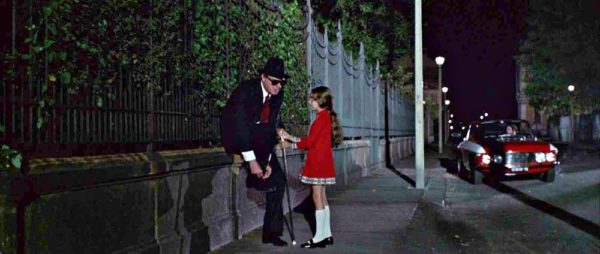
Obviously The Cat o’ Nine Tails is early Argento, but the film bears a number of visual and narrative elements that have since become synonymous with his work. Where does the film fall in his oeuvre for you?
I love his supernatural stuff, of course (I watch Phenomena a few times a year)…but his giallos have always occupied a special place for me. The black gloved killers. The hyper colors. It’s kind of sexy.
What’s more, when Argento uses dream logic in a giallo, it’s even more striking. In a story with supernatural elements, if reality seems a little askew, it feels almost par for course. But in a crime story, when that otherness takes hold, it just feels so much…more.
While Cat is fairly straight-forward in comparison to some of his other stuff, as you said, the seeds are there. The blood drops from above. The fight on the roof. There’s an elegant savagery that I find totally compelling. It’s not quite as poised as Bird with the Crystal Plumage or as frenetic as Four Flies on Grey Velvet, but there’s just something about it that just hits. This is top tier Argento for me.
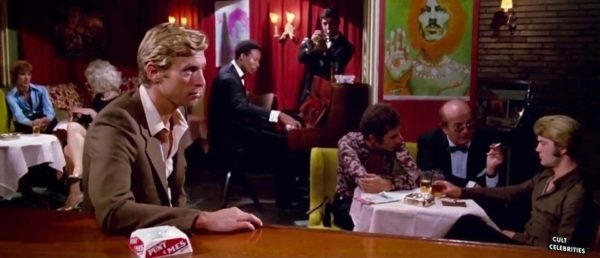
We connected over the film specifically because there’s a reasonably prominent queer element in the film. I’m thinking specifically when intrepid journalist Carlo questions Dr. Braun (Horst Frank) at a gay bar called the St. Peter’s Club. What stands out for you in this and Dr. Braun’s other scenes?
What stands out to me is how usual it all seems in the world of the characters. When the lead goes to the gay bar to question Dr. Braun, he’s unfazed and even flattered when he’s complimented.
That shouldn’t be remarkable, but you have to remember that this movie was made in 1971. We have mainstream movies today where “gay panic” is utilized as a trope and effeminate men are the butt of jokes, so for these characters to be presented so matter of factly at that time feels extremely affirming.
It’s even more significant because it’s really a secondary detail. Dr. Braun is a scientist who happens to be gay, and going to speak to him at a gay bar is just a matter of course. He’s not defined solely by his sexual orientation, which was so common for queers in cinema at this time.
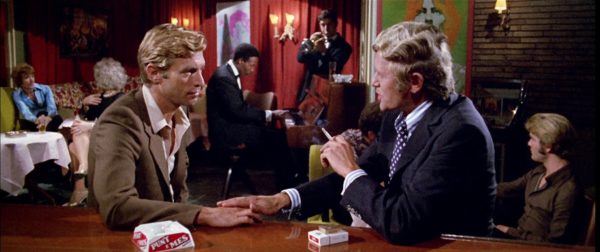
I love how passionate you are…
I think what I like about it is that Argento handles it so casually. That’s not something to take lightly. I grew up in a mostly old school Italian family, and the culture is very much steeped in Catholicism and machismo…so for this titan of Italian film to present queer characters on screen so matter of factly in an era where queer representation was practically nonexistent to begin with…that’s something significant.
What’s more, if you look at Argento’s work at the time, he seemed committed to queer portrayals. There’s a gay informant in Bird with the Crystal Plumage and Four Flies on Grey Velvet features not only an out gay inspector who is a secondary hero, but an antagonist who experiences gender dysphoria because of the constructs thrust upon her by toxic men.
It’s like Argento was trying to tell us to chill the hell out and just let people live way back then. His characters still occasionally fall victim to tropes and stereotypes, but in an era where nothing was perfect, this was heads above.
You had tipped me off to keep an eye out, so my Spidey senses were tingling whenever queer representation showed up. Even when Dr. Braun’s ex-lover tells Carlo where to find Braun in a jealous huff, it’s one more character beat than nearly any of the other dead scientists get in this complicated narrative. It’s an intriguing creative choice.
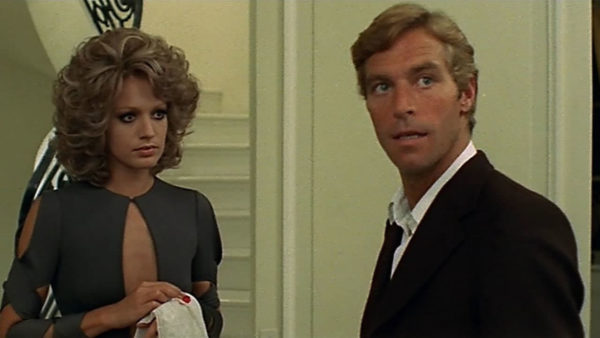
So we’ve talked about the positive, unorthodox representation of queer men. Can we talk about the camp aesthetic of the two prominent female characters in this film? I fully acknowledge that big hair was a style in the 70s, but whenever Catherine Spaak (as red herring femme fatale Anna Terzi) was onscreen, I was dazzled.
The hair alone! Even if those were wigs on Drag Race, they would seem opulent.
The character of Anna Terzi especially is given the opportunity to vamp it up in so many delicious ways. Her wardrobe is equally decadent. As you pointed out, she’s a femme fatale, which makes sense because giallo’s roots are as crime stories…so I wouldn’t be surprised if Argento was relying on noir tropes as he found his own footing. But because his world is so hyper stylized, it becomes something next level. It’s almost like giallo drag. Is that a thing? It is now!
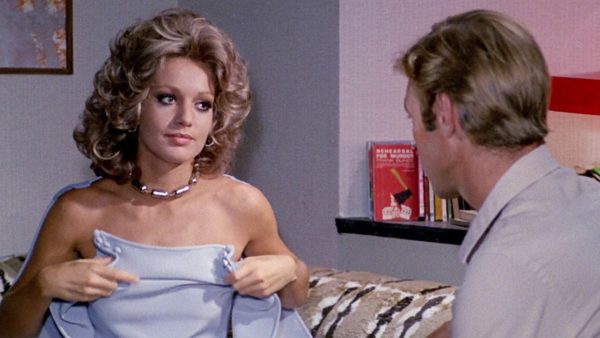
I was admittedly also very frustrated when it was revealed that she wasn’t actually the murderer. Is there a point in discussing the actual narrative thread in this film considering how twisty/turny it is? I know Argento is on record as being unhappy with how the film turned out.
It was sort of a surprise that she was a red herring, especially because Argento, in defiance of slasher and general horror formula, does love to have female villains. But yeah, I agree…it’s probably an effort in futility trying to truncate the plot considering that even his most linear movies still tend to take on a sense of the abstract…and couple that with an unfurling mystery…we’d be talking in circles.
I don’t know why he’s unhappy with this film, though. I think it’s a pretty effective thriller. It doesn’t hit the heights of his later, more stylized work…but sometimes a good thrill and chill is enough. Despite his own misgivings, it does remain one of his more popular works. So, really…who’s to say?
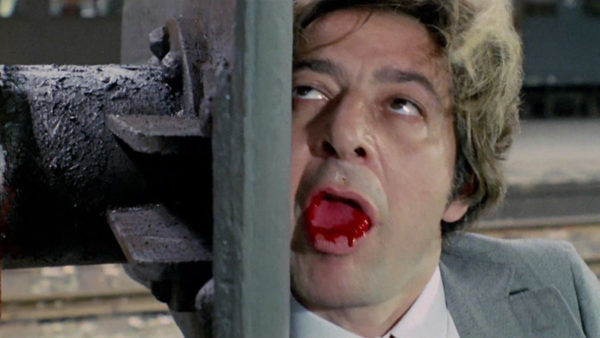
Now let’s talk set pieces. My connection with Argento is almost entirely stylistic: I’m a huge fan of how frankly gorgeous his murder sequences are. While I don’t know that The Cat o’Nine Tails is going to surpass some of his most infamous deaths, I did love the expediency of the initial train death, as well as Bianca’s textile-laden hallway strangulation. Did any of the deaths or set pieces jump out at you?
The train death is spectacular! And the way it was captured by the photographer? I know early on that Argento was compared to Hitchcock, and that sequence makes it easy to see why. It’s a really well-paced moment that ends with a big pay off.
I don’t know that it’s particularly a grand sequence, especially in comparison to Argento’s other, bloodier set pieces…but I have to say, and we discussed this before doing the interview, I was extremely tickled that the killer attempted to use poisoned bags of milk to take out our protagonist. Not only is it somewhat absurd to see these seeping milk pouches and know they are an instrument of mayhem…but the way Argento juxtaposes them as sexual allegory in the scene is just…bonkers. Who doesn’t love poisoned milk that doubles as orgasm symbolism? That man is WILD.
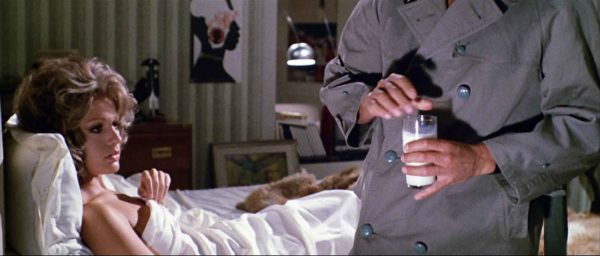
Ultimately I’m more than happy to have crossed off The Cat o’Nine Tails, though it does play a bit like Argento is working through his process to discover what kind of filmmaker he’ll become. Overall it’s a 3/5 for me.
What’s your final rating (out of 5) for the film? And where can people get in touch with you if they want to follow up?
I walked away from The Cat o’ Nine Tails really quite enjoying it, but also knowing that for the artist to come, it was definitely a more restrained outing.
That being said, I’d give it a 3.5 out of 5. There’s a lot to like here. The relationship between Karl Malden and the little girl was sweet, and I thought Franciscus was a great lead. I also loved seeing 70s Italian drag queens. I was never bored and these days that accounts for a lot.
If people want to track me down and talk black gloved killers and Italian intrigue, you can find me on Twitter @MichaelVarrati. Also, my podcast Dead for Filth drops on Fridays and is available wherever podcasts can be found.